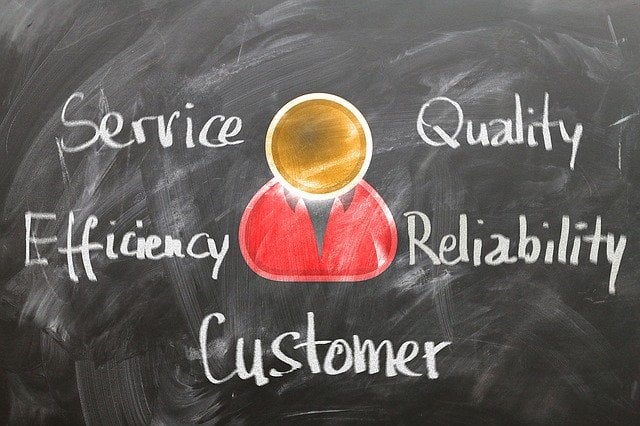Electronic health record (EHR) software was designed, in part, to alleviate the pressures put on health care providers. EHR platforms can take on large swathes of a facility’s computing burden and improve internal procedures.
In a perfect world, a clinician’s EHR frees them up to focus on treating patients.
Burnout Associated with EHR Use
More research has been attributed to burnout in recent years.
As a company with clinical professionals on staff, we at Sigmund are encouraged by these developments. Investigating the relationship between EHR use and the pressures put on health care providers will only help our industry.
Unfortunately, some of the data shows that a poor EHR experience can be a contributing factor to burnout.
This article explores how a flawed EHR solution can impact a health care professional’s overall experience on the job. Based on external research and internal conversations with our Sigmund experts, we have identified four EHR red flags that can lead to burnout in its users.
- Non-Intuitive Platform
- Lack of Customization
- Lack of Automation
- Ineffective Customer Portal
A platform with these shortcomings can burden behavioral health providers with technological challenges. In a job that already comes with many inherent clinical obstacles, an inadequate EHR can make life even harder for clinicians.
Continue reading to learn how an effective EHR solves these problems, which in turn protects against staff burnout.

Non-Intuitive EHR Solution
There is always a learning curve involved when adopting a new health records system. Certain EHR software tools are easier for staff to adapt to than others.
If an EHR is not intuitive, a facility’s operation can experience disruption while using it. Initial training periods can take longer than necessary if the platform is hard to use.
Some common challenges associated with a non-intuitive platform:
Varying levels of technological skills among staff:
It is unlikely that all your employees will be computer experts. The more difficult an EHR platform is to use, the more time and effort it will take to get your entire team up to speed.
Click Fatigue
Click fatigue describes needing an abundance of clicks to find information. Clinicians then waste time navigating the EHR for necessary data instead of focusing on patient treatment.
Clunky Interface/Dashboard Configuration
Like a cluttered room, a cluttered EHR design can create stress for staff, or overwhelm them, while executing time-sensitive tasks. An EHR’s design should promote efficient use, thus making more efficient users. For example, dashboards are critical EHR tools that should enrich a user’s experience rather than complicate it.
The EHR Solution
Ease of use is a critical element of an effective EHR. The most intuitive platforms can help eliminate inefficiencies at a behavioral health operation. Chances are, your staff will have varying levels of comfort with digital technology.
Ideally, an EHR is easy to navigate for employees of all technological skills, which saves time and prevents frustration.
Other EHR resolutions are:
Consolidated Platform
Each task requires the least clicks possible to complete. A consolidated EHR increases the overall efficiency of your operation and cuts down on staff irritations.
The ideal EHR solution is an enterprise system, where all of its functions, features and services are accessible in a single platform. A truly consolidated EHR does not make you go outside the system for anything.
Attractive and Sensible User Interface
Clunky or outdated EHR interfaces can be a subtle but real barrier to user acceptance that may frustrate staff over time. Dashboards, forms, notes and reports should be strategically located in areas that facilitate their functions.
For example, sections such as medical history and demographic information should be easily accessible and functional for front desk staff during patient intake.
Lack of Configuration
Certain EHRs are more configurable than others.
In EHRs with minimal customization, clinicians often have to adapt to an EHR platform rather than the platform adapting to their needs. These vendors are prone to creating workarounds outside the system to complete the required tasks.
External workarounds can be time-consuming and disruptive for clinicians.
There is the built-in frustration of an EHR vendor being unable, or unwilling, to cater their technology to a facility’s preferred processes. Furthermore, the workarounds themselves are often burdensome and overly complicated.
A lack of configurability can obstruct the uniformity of an organization’s process.
Ideally, an EHR allows its users to tailor procedures to their specific operation. However, when workarounds are required to achieve desired functionality, it introduces roundabout solutions into a platform that should be efficient and systematic.
As the EHR vendor has to implement more workarounds to accommodate the growing needs of a facility, more opportunities for miscommunication and confusion can arise.
For example, there may be two employees in the same department that are performing the same task in different ways. All staff, across all departments, should be speaking the same EHR language and following the same EHR protocols to optimize collaboration and support.
The EHR Solution
The more customization an EHR platform offers, the better. Customer satisfaction increases when a platform can be molded to suit the customer’s current practices. Some crucial features that an effective EHR can customize are:
Configure screens, charts, and dashboards to set users up for success
Different staff with different roles should be able to configure their screens in ways that optimize their tasks.
For example, it does not make much operational sense to force the front desk staff to use the same screen configurations as the RNs. They have very different responsibilities, so the option for different screens should be available to them.
Role-Based Settings control the access of all employees
An effective EHR should provide role-based security measures to make sure that each employee is only seeing what they are at liberty to see. This cuts down on potential confusion among staff. They will not have to wonder about which data they are allowed to interact with.
Thus, it also fortifies the secure management of patient data.
Reports
Reporting is a crucial EHR feature.
Ideally, a platform should provide robust reporting tools that allow for customizable search parameters and real-time analysis. As a result, users can measure and analyze data that is important to their specific operation, such as the quality of treatment they are providing or the facility’s financial health.
Effective reporting features help a facility identify its areas of excellence and, perhaps more importantly, areas that need improvement.
.jpeg)
Lack of Automation
Additional research has been conducted on how documentation errors in particular can cause burnout in health care providers. Two important aspects of documentation related to user satisfaction are:
- Automated Data Capture
- Automated Compliance Documentation
The optimal EHR automates as much documentation as possible.
Double entry is a common cause of frustration for health care providers. That is the kind of manual labor that an EHR is designed to replace.
Constantly re-entering patient data can become tiresome for clinicians. Over time, they may get frustrated with these small, yet cumulative inefficiencies that disrupt the treatment of patients.
Complying with state regulations and insurance requirements is a complex mandatory task for behavioral health facilities. As a result, there is room for human error if users are not supported by some sort of automation feature.
Without effective automation, employees can get irritated with the platform due to frequent inaccuracies and time-consuming corrections to documentation.
Navigating state and private insurance requirements is an area where automation is especially important. A lack of automation in an EHR’s billing features can lead to denied or rejected insurance claims. Reconciling incorrect claims can be costly for a behavioral health facility.
Besides the financial implication, a high volume of denied or rejected claims can become discouraging for billing staff. Frequently having to make corrections to claims can distract staff from other important billing tasks as well.
The EHR Solution
EHR should eliminate the need for double entry. The most effective platforms capture patient information once, and then generate that information anywhere in the platform, whenever it is needed.
For example, when a patient’s medication allergies are documented in their chart during admission, that information should be presented when a doctor tries to prescribe them a particular medication.
This is an efficient and reliable way for doctors to confirm patient allergies, which optimizes the efficiency of treatment and safety of patients.
Automated documentation can empower employees, such as the billing staff, to execute complex tasks once and move on to the next one.
Completing tasks in one shot is especially important when complying with the requirements of insurance companies.
An effective EHR can protect against errors and expedite the completion of such documentation through automation features. The billing staff then enjoys a high rate of clean claims, giving them peace of mind and the ability to focus on additional items.
Ineffective Customer Portal
A customer portal serves as the central hub for EHR users. Much like a patient portal, the customer portal promotes engagement between the EHR vendor and the behavioral health facility. The portal is built by the EHR vendor as a place for customers to:
- Access essential information such as system updates and training materials
- Communicate with necessary staff from the EHR vendor (project managers, trainers, support)
There are a number of ways an EHR company can deliver these features, so the quality of a customer portal depends on two things:
- The usability of the portal interface
- The effort and attention the vendor puts into keeping the information on the portal updated and accurate
These elements can make or break an end user’s experience with a customer portal.
If the layout is clunky, or information is difficult to locate, users can become irritated and delayed when using the portal. If users have a poor experience with a feature meant to support them, it can breed distrust in their vendor and dissatisfaction with their job.
Even if a customer portal is very intuitive, it can still prove to be ineffective if the EHR vendor is not diligent in maintaining the content available to users.
For example, a vendor may release a system update without communicating the proper information in the customer portal.
Ideally, there will be clear and organized lines of communication between an EHR vendor and its customers. The vendor may notify and train designated staff on changes in the EHR, who then train and support the rest of the users at the facility. The vendor can then upload corresponding training materials to the customer portal so that all staff can access them at any time.
If those materials are not uploaded promptly, it can put a lot of pressure on the system admins or super users who are tasked with educating staff on changes in the system.
Without supplemental training content, general users may remain confused, or unaware, of updates until a superuser is able to get to them. This process can lead to burnout in staff, leaving users unproductive and dejected, and internal trainers overwhelmed.
The EHR Solution
The best customer portals are founded in powerful technology and quality customer service.
An EHR company should treat their customer portal as a vital feature.
It can be a transformative function during implementation, training, and system updates. If the portal is easy to use, and the vendor is dedicated to keeping its content current and instructive, a facility should have no issue adopting changes in its platform.
As a result, an effective EHR solution should provide the option for general staff to access training materials on the customer portal.
Granted, some users may need direct training to be caught up fully. However, the information on the customer portal can be an effective stopgap so users can remain functional until their internal trainers provide personal assistance.

Fighting Burnout with AURA
One of the many reasons that make Sigmund’s team particularly qualified is the number of former behavioral health professionals we have on staff.
Their combined experience continually pays off in helpful industry insights while creating all aspects of AURA, Sigmund’s enterprise EHR solution.
We take pride in understanding the challenges that care providers face in a real-world clinical setting and we are confident in our ability to create software solutions for those problems.
AURA boasts intelligent and intuitive workflows, dynamic reporting tools, and industry-leading configurability. However, our technology does not stand on its own. Sigmund’s implementation staff is an integral part of our ability to deliver user-friendly, tailor-made software solutions.
They have guided countless facilities through intensive EHR implementations and AURA configurations. Though anyone in the industry will agree that it is impossible to account for every dilemma, we believe our implementation staff has established a proven, regularly-tested process.
One area our implementation staff excels in is the quality of training we provide our customers.
Through direct and hybrid training with system admins, Sigmund provides users with all the resources and communication they need. In turn, system admins are fully prepared to train and communicate with their coworkers and supervisors to create a productive and collaborative EHR environment.
Bethany Lopes, a nurse and expert in AURA’s medical features, singled out our eMAR as an EHR feature that can actively fight against burnout. Our customers have reported that it is an awesome tool to safely and efficiently treat patients. Check out her quick and insightful video here!


